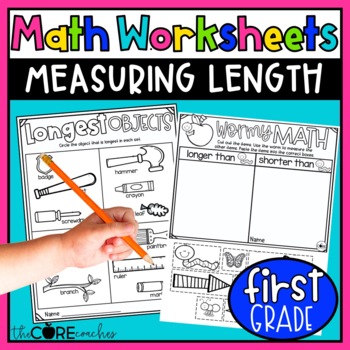Measurement Length Worksheets - Nonstandard units - 1st Grade Math Practice
- PDF
Also included in
- This First Grade Math Worksheets Bundle of activities are meant to be assigned as extra math practice for students once they have been taught about the math topics.12 Math Topics are included to cover all first grade CCSS Standards. Each topic contains 20 printable worksheets for students to completPrice $24.00Original Price $36.00Save $12.00
Description
These Measuring Length Worksheets are meant to be assigned as extra math practice for students once they have been taught strategies for comparing numbers.
The worksheets can be assigned to students individually or as a packet. They can also be used in small groups for extra practice. They also pair perfectly with our independent Digital Measuring Length activities.
Give your students the supplemental math practice they need in just minutes with zero prep!
These Measurement- Length math practice worksheets include:
- 20 Printable Worksheets (with answer keys)
- A Checking for Understanding quick assessment
- Teacher overview and instruction sheet
- Activities at-a-glance sheets for teacher reference
Engage your students in extra math practice on measuring length to the nearest whole unit with these fun activities!
★★★★★★★★★★★★★★★★★★★★★★★★★★★★★★★★★★★★★★★★★★★★★★★★★★
Follow us to get updates on our newest products!
For helpful tips, hints, and classroom strategies check out our website!






